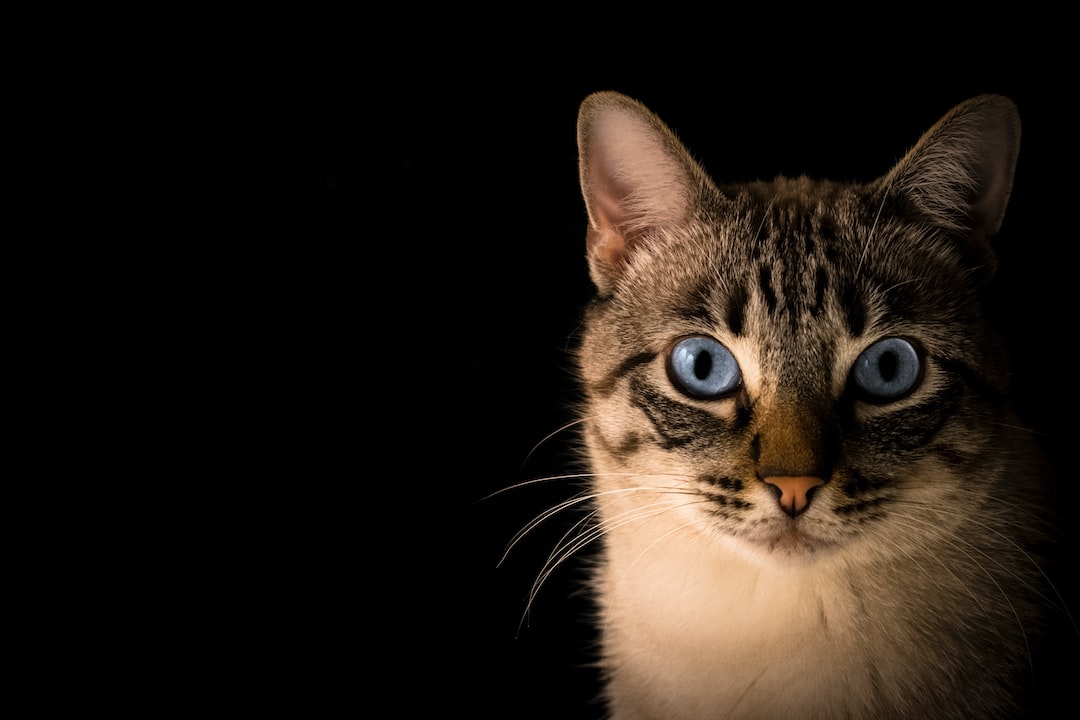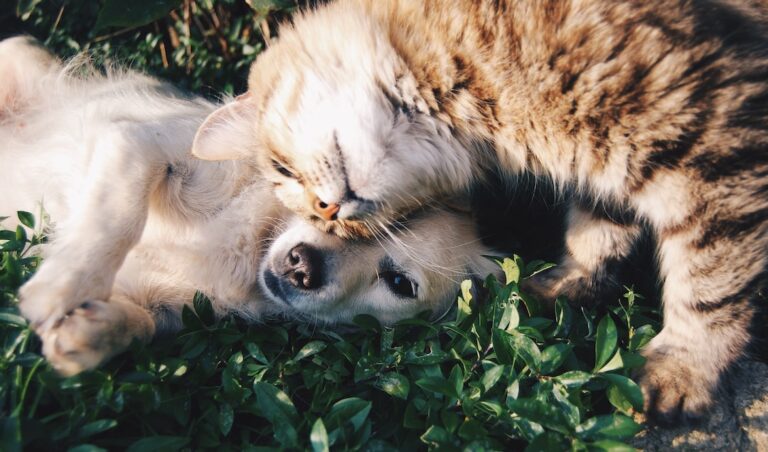Introduction
Cats have long been known for their mysterious and enigmatic behavior. Unlike dogs, who wear their emotions on their sleeves, cats often seem to have a hidden world of their own. Understanding feline behavior is important for cat owners because it allows them to better care for their furry friends and build a stronger bond with them. By decoding the mysteries of the feline world, we can provide our cats with the physical and mental stimulation they need, create a cat-friendly environment, and respond appropriately to their needs and emotions.
The Mysterious World of Cats: Understanding Feline Behavior
Cats are unique creatures with their own set of characteristics that set them apart from other pets. They are independent, territorial, and have a strong sense of curiosity. Unlike dogs, who are pack animals, cats are solitary hunters by nature. This independence and self-reliance can often lead to their mysterious behavior. Cats are known for their ability to hide their pain and discomfort, making it difficult for owners to know when something is wrong. They are also masters of disguise, often blending into their surroundings and disappearing when they don’t want to be found.
Decoding the mysterious behavior of cats requires understanding their body language and vocalizations. Cats communicate through a combination of vocalizations, body postures, and scent marking. For example, a cat’s tail can tell us a lot about their mood. A relaxed and upright tail indicates a content and confident cat, while a puffed-up tail indicates fear or aggression. Similarly, a cat’s ears can provide insight into their emotions. Ears held forward indicate curiosity or interest, while flattened ears indicate fear or aggression.
The Importance of Playtime for Your Feline Friend
Playtime is not just a fun activity for cats; it is also essential for their physical and mental well-being. Cats are natural hunters, and playtime allows them to fulfill their hunting instincts. It provides them with the physical exercise they need to stay fit and healthy, as well as mental stimulation to prevent boredom and destructive behavior.
During playtime, cats can engage in activities that mimic hunting, such as chasing and pouncing on toys. This helps them release pent-up energy and satisfy their natural instincts. Playtime also provides an opportunity for cats to bond with their owners and build trust. By engaging in interactive play, owners can strengthen their relationship with their feline friends and create a positive and enriching environment for them.
To engage your cat in playtime activities, it is important to provide a variety of toys that cater to their natural instincts. Toys that mimic prey, such as feather wands or interactive puzzle toys, are particularly effective. It is also important to set aside dedicated playtime each day and make it a routine. This will help your cat anticipate and look forward to playtime, and ensure that they get the physical and mental stimulation they need.
The Social Life of Cats: How They Interact with Each Other
Contrary to popular belief, cats are not solitary animals. While they may not be as social as dogs, they do have a social structure and can form strong bonds with other cats. Understanding the social behavior of cats is important for cat owners, especially those who have multiple cats or are considering introducing a new cat into their household.
Cats communicate with each other through a combination of vocalizations, body language, and scent marking. They use scent marking to establish their territory and communicate with other cats. This can include rubbing their face against objects or spraying urine. By understanding these behaviors, owners can help facilitate positive interactions between their cats and prevent conflicts.
When introducing a new cat into a household, it is important to do so gradually and carefully. Cats are territorial animals, and sudden introductions can lead to stress and aggression. It is recommended to keep the new cat in a separate room initially, allowing them to become familiar with the scent of the other cats in the household. Slowly, supervised interactions can be introduced, allowing the cats to get to know each other at their own pace.
The Role of Diet and Nutrition in Your Cat’s Behavior
Diet and nutrition play a crucial role in a cat’s behavior and overall health. Cats are obligate carnivores, which means they require a diet that is high in animal protein. A diet that is lacking in essential nutrients can lead to a variety of behavioral issues, including aggression, anxiety, and excessive grooming.
When choosing a cat food, it is important to look for a high-quality, balanced diet that meets the nutritional needs of your cat. This includes a high percentage of animal protein, as well as essential vitamins and minerals. It is also important to provide fresh water at all times and avoid feeding your cat excessive amounts of treats or table scraps.
In addition to a balanced diet, it is also important to provide your cat with mental stimulation during mealtime. This can be done through the use of puzzle feeders or interactive toys that require your cat to work for their food. This not only provides mental stimulation but also helps prevent overeating and obesity.
The Power of Scent: How Cats Use Their Sense of Smell
Cats have a highly developed sense of smell, which they use to communicate and navigate their environment. Scent plays a crucial role in a cat’s behavior and can have a significant impact on their mood and well-being. By understanding how cats use their sense of smell, owners can use scent to their advantage and create a positive and enriching environment for their feline friends.
Cats use scent marking to establish their territory and communicate with other cats. They have scent glands located on their face, paws, and tail, which they use to leave their scent on objects and surfaces. By rubbing their face against objects, they are marking them as their own and sending a message to other cats.
To use scent to your advantage, you can provide your cat with a variety of scent-rich objects and surfaces. This can include scratching posts, cat trees, or even a designated area where they can rub their face against. By providing these scent-rich environments, you are allowing your cat to engage in natural behaviors and create a sense of security and familiarity in their surroundings.
The Art of Purring: What It Means and Why Cats Do It
Purring is one of the most distinctive behaviors of cats, and it is often associated with contentment and relaxation. However, purring can also serve other purposes and can be an indication of various emotions and needs.
While purring is commonly associated with contentment, cats can also purr when they are in pain or distress. This is believed to be a self-soothing mechanism, as the vibrations produced by purring can have a calming effect on the cat’s nervous system. It is important for owners to be able to distinguish between different types of purring and understand the context in which it occurs.
To encourage purring in your cat, it is important to create a calm and relaxing environment. This can include providing a comfortable and safe space for your cat to rest, as well as engaging in gentle and soothing interactions. By creating a positive and stress-free environment, you can help your cat feel more relaxed and encourage them to purr.
The Secret Language of Cats: Decoding Their Body Language
Cats communicate through a combination of vocalizations, body language, and scent marking. Understanding your cat’s body language is crucial for interpreting their needs and emotions. By paying attention to their body postures, facial expressions, and tail movements, you can better understand what your cat is trying to communicate.
A cat’s body language can provide insight into their mood and intentions. For example, a relaxed and upright tail indicates a content and confident cat, while a puffed-up tail indicates fear or aggression. Similarly, a cat’s ears can provide clues about their emotions. Ears held forward indicate curiosity or interest, while flattened ears indicate fear or aggression.
It is important to respond appropriately to your cat’s body language and provide them with the space and support they need. For example, if your cat’s ears are flattened and their tail is puffed up, it is best to give them some space and avoid approaching them. On the other hand, if your cat is showing signs of relaxation and contentment, you can approach them gently and provide them with affection and attention.
The Impact of Environment on Your Cat’s Behavior
The environment plays a significant role in a cat’s behavior and overall well-being. Cats are highly sensitive to their surroundings and can be easily stressed by changes in their environment. By creating a cat-friendly environment, owners can help reduce stress and anxiety in their feline friends and promote positive behaviors.
A cat-friendly environment includes providing a variety of resources and spaces for your cat to explore and engage in natural behaviors. This can include providing scratching posts, climbing trees, and hiding spots. It is also important to provide a litter box that is easily accessible and in a quiet and private location.
In addition to physical resources, it is also important to create a calm and stress-free environment for your cat. This can be achieved by providing a routine and predictable schedule, as well as minimizing loud noises and sudden changes in the environment. By creating a stable and secure environment, you can help your cat feel safe and comfortable in their surroundings.
The Benefits of Training Your Cat: Yes, You Can Teach Them Tricks!
Contrary to popular belief, cats can be trained and taught tricks, just like dogs. Training not only provides mental stimulation for cats but also helps improve their behavior and strengthens the bond between cats and their owners.
Training a cat requires patience, consistency, and positive reinforcement. Cats respond best to rewards-based training, where they are rewarded with treats or praise for performing desired behaviors. It is important to keep training sessions short and frequent, as cats have a shorter attention span compared to dogs.
Some common tricks that can be taught to cats include sit, stay, and come. These basic commands can be useful in everyday situations, such as when you need to call your cat or keep them from jumping on the counter. Training can also be used to redirect unwanted behaviors, such as scratching furniture or biting.
The Emotional Life of Cats: Understanding Their Mood Swings and How to Help Them
Cats have a rich emotional life and can experience a wide range of emotions, including happiness, fear, and anxiety. Understanding their emotions is important for cat owners, as it allows them to provide the support and care that their cats need.
Cats express their emotions through a combination of vocalizations, body language, and behavior. For example, a cat that is feeling anxious or stressed may exhibit behaviors such as hiding, excessive grooming, or aggression. It is important to be able to recognize these signs and respond appropriately.
To help your cat manage their emotions, it is important to create a calm and stress-free environment. This can include providing a safe space for your cat to retreat to, as well as engaging in activities that promote relaxation, such as gentle petting or playing soothing music. It is also important to provide mental stimulation and enrichment to prevent boredom and anxiety.
Conclusion
Understanding feline behavior is crucial for cat owners, as it allows them to better care for their furry friends and build a stronger bond with them. By decoding the mysteries of the feline world, we can provide our cats with the physical and mental stimulation they need, create a cat-friendly environment, and respond appropriately to their needs and emotions. By understanding their unique characteristics, the importance of playtime, socialization, diet and nutrition, scent, body language, environment, training, and emotions, we can create a harmonious and fulfilling relationship with our feline companions.
If you’re interested in learning more about cat behavior and how to better understand your feline friend, you may want to check out this insightful article on the PetsofTampaBay.com blog. The article discusses the importance of hiring a cat behaviorist in Tampa Bay and how they can help address common behavioral issues in cats. Whether you’re dealing with litter box problems, aggression, or excessive scratching, a cat behaviorist can provide valuable guidance and solutions. To read the full article, click here.




